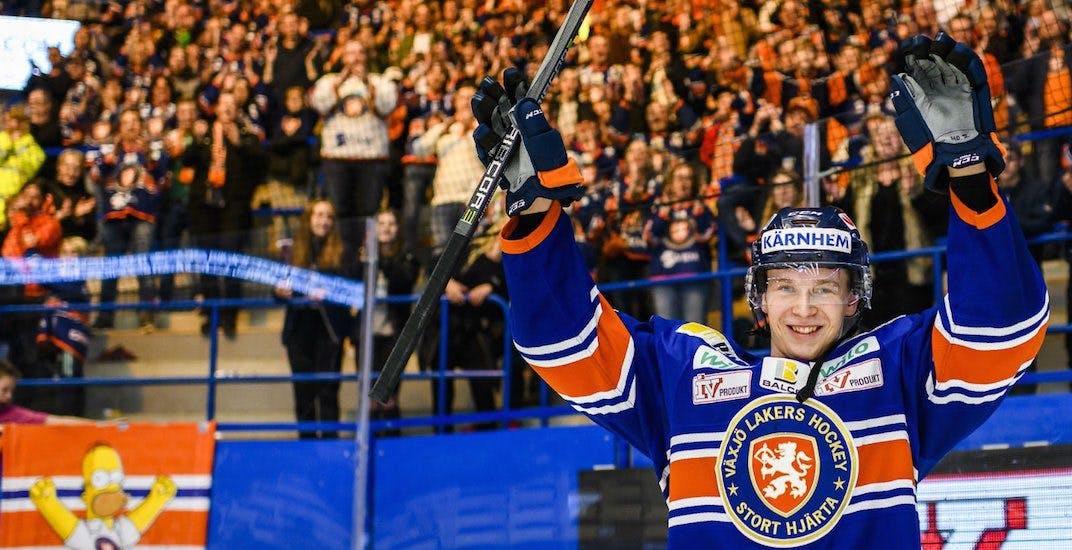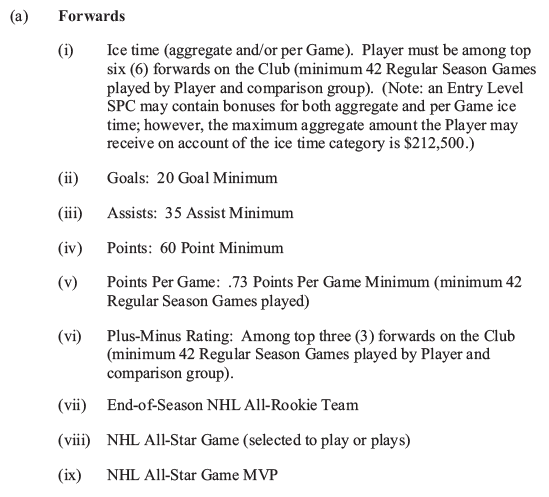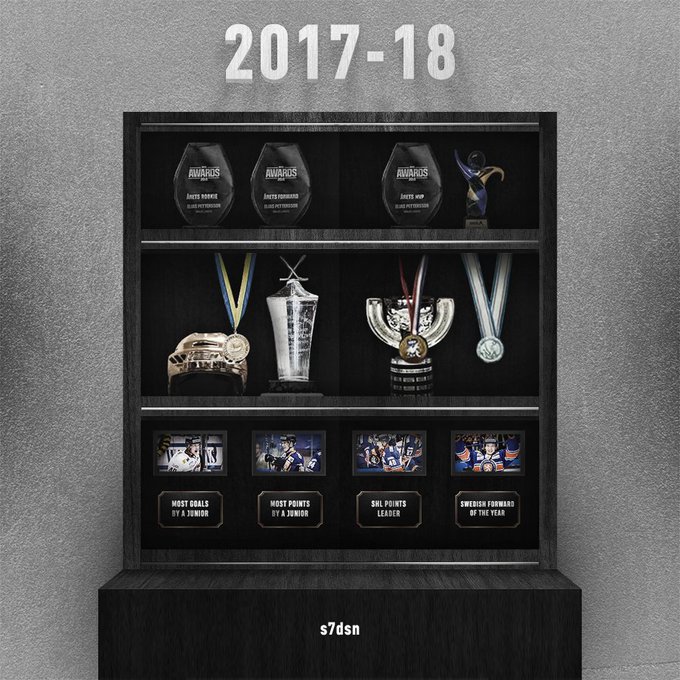Elias Pettersson's season started about 8 months ago. What's happened since then? SHL... Rookie of the Year Forward of the Year MVP Playoff MVP Championship Most goals by a Junior Most points by a Junior in Season and Playoffs WC Gold u20 WJC Silver Swedish Forward of the Year
Nation Sites
The Nation Network
CanucksArmy has no direct affiliation to the Vancouver Canucks, Canucks Sports & Entertainment, NHL, or NHLPA
Elias Pettersson Becomes First 5th Overall Pick to Max Out on Allowable ELC Bonuses

Photo credit: hockeysverige.se
By Jeremy Davis
May 26, 2018, 19:02 EDTUpdated: May 26, 2018, 19:17 EDT
We all know that Elias Pettersson is a pretty special player, and it certainly seems that the Canucks are intent on treating him like one. After announcing his Entry Level Contract yesterday, it was revealed by CapFriendly today that the Canucks elected to add the maximum allowable ELC performance bonuses. Maxing out on bonuses is a privilege typically reserved for first overall selections; Pettersson will reportedly be the first ever fifth overall pick to receive this treatment.
As a quick refresher, the NHL’s Collective Bargaining Agreement (the “CBA”) with the NHLPA outlines two types of performance bonuses that can be attached to Entry Level Contracts: Individual “A” Bonuses, paid by the signing club; and Individual “B” Bonuses, paid by the club and/or the league. Each type of bonus has strict rules on how they can be awarded, and different maximum sums: $850,000 for Type “A”, and $2 million for Type “B”.
“A” bonuses are statistic-based bonuses that depend on the player either hitting certain threshold or finishing the season near the top of the team in certain categories. For forwards, they minimum thresholds look like this:

The club, the player, and the player’s agent have the option of negotiating specific aspects of the bonuses, such as multiple thresholds per category (eg. a bonus for hitting 20 goals and another bonus for hitting 30 goals), though each category cannot exceed a limit of $212,500. The bonuses can be set up in any number of different ways, with a myriad of possible payments, and from one category to all nine. However, we know that because of the limits on individual categories and the fact that he maxed out on the amount, at least four categories have been included.
Individual “B” Bonuses, on the other hand, have to do with league-wide trophies and statistical categories. They are much harder to achieve, but they are worth a lot more money. They can be paid by both the club and the league: a flat rate is paid by the league for finishing near the top of balloting for NHL awards (including the Hart, Selke, Lady Byng, Calder, and 1st/2nd Team All-Stars), winning the Richard or Conn Smythe, or finishing in the top ten for goals, assists, points, and/or points per game. The team and player then has the option of negotiating bonus amounts in addition to the league-paid ones. The league-paid portion does not count against the salary cap. The aggregate sum of the club contributions to these cannot exceed the $2 million limit.
Pettersson, unsurprisingly, is the first Canuck to max out these potential bonuses. The team’s reigning rookie sensation, maxed out his allowable Individual “A” Bonuses, subsequently earning the entire $850,000 following a season in which he scored 29 goals, 0.89 points per game, finished second among forwards in average ice time, played in the NHL All-Star game and won the All-Star MVP award. No matter how you slice it, he was getting his $850k.
Boeser did not have any Type “B” bonuses in his contract though, so Pettersson will have the opportunity to out-earn the American winger this coming season. The money is all sorted out. The bigger question is whether he has any more space in his trophy case.
Recent articles from Jeremy Davis
Breaking News
- A quick look at the pieces coming back to the Canucks in the Hughes trade
- Rutherford: Canucks had indication Hughes wouldn’t re-sign prior to trade
- ‘Key part of our rebuild’: Canucks’ Rutherford and Allvin address the Quinn Hughes trade
- Canucks trade captain Quinn Hughes to Minnesota Wild; Marco Rossi and more headed to Vancouver
- Canucks played to smallest home crowd of season so far in Thursday’s loss to Sabres

